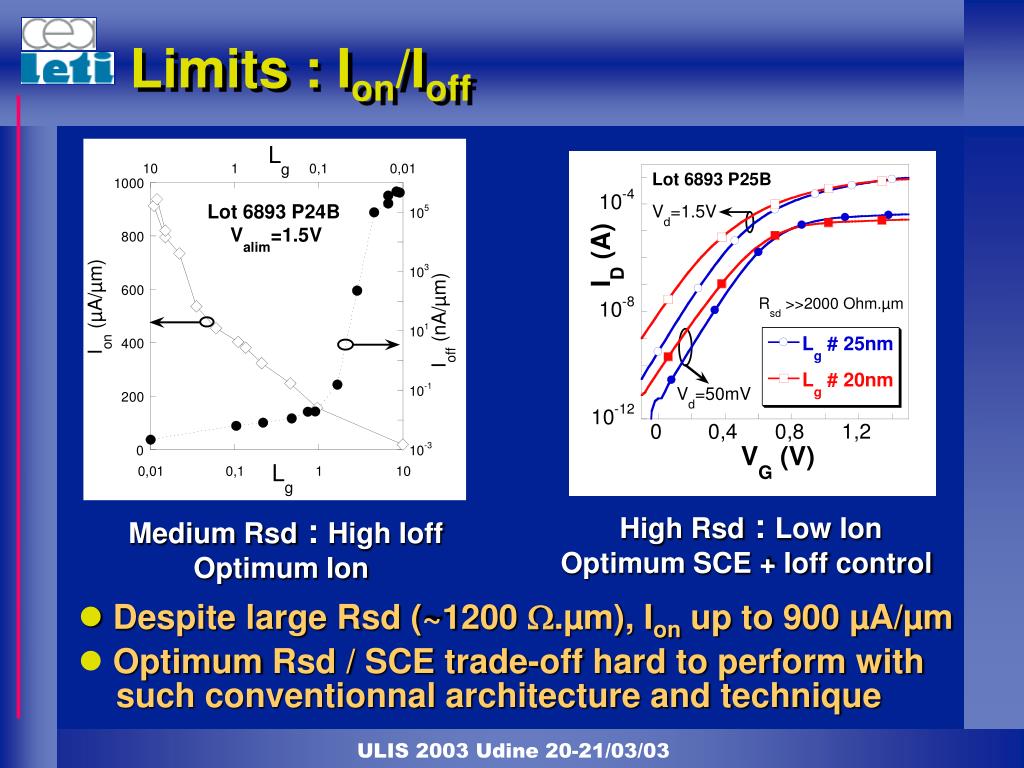

So in other words you make this one to 0 prime negative and with another minus sign here becomes positive. A better way to do it is just change to 0 if you can. So ideally you do not want to dope this up straight heavily throughout it's extent. And you also have large junction capacitances is because the depletion regions are narrow and the junction capacitances are large. First of all, you have a large buddy effect because of a large gamma. And to make gamma very large, you would have to use a large substrate doping, and then undesirable things happen.
#Halo implant ion ioff gain ro plus
Now, if this is minus 1 vote, be at least minus 1 vote and you want the results to be plus 0.4 if you make a quick calculation, you'll find that gamma must be very large. So 0.4 is a compromise between too low a value and too high a value. want VGS minus Vt to be as large as possible to give you a large current when the device is on, you don't want to make Vt zero very large. Now we want this to be positive, let's say we need it to be about 0.4 volts because we want to make sure that the device is off, for digital applications when VGS is zero. Now the threshold voltage turned aught to be V plus V0 plus gamma squared 2 V0. with the clean processes today, Q zero prime is practically zero, and you can neglect it.so the total value of Vfb turned aught to be about minus 1 volt. for an N plus poly gate, pi ms is about minus one volt. To motivate, let us start with an un-implanted device always, and most it has a flat pan voltage given by Fie ms minus Q0 over Cox, as we know. So let us now talk about the so called High-Low Profile. And these are the halo implants, and as I have already mentioned if you now make the channel length shorter now the halo implants approach each other and the substrate doping becomes large throughout the region under the channel. This is a threshold adjust implant next to the surface these are the extension regions. Now the substrate doping is shown here, you can see it is somewhat higher than 10 to the 17th centimeter to the minus 3. So the this dip here defines the juntion boundary. The two cancel each other out and the net doping goes to 0, which on the logarithmic axis such that the one we have here, means that this actually goes down to minus infinity. When the N type doping becomes sequel to the P type doping concentration of the substrate. Because these regions are implanted and the implant results in a variation of the doping concentration with depth. Now, the doping of the source and terrain regions is high, near the surface, and it goes down, for reasons that we will see. So the, the surface corresponds to y equals 0, unless you go down below the surface, it's like this. And this one here is the depth of the, is the depth below the surface. And the x, dimension is the horizontal dimension along the channel. the vertical access is dopping concentration. Here is a three dimensional picture of a ironing planted device. This effect will be important to incorporate of course in the threshold voltage because the threshold voltage depends on substrate doping. And you see that they kind of merge, and now the entire substrate below the channel is highly doped.

Then these two regions will apploach, approach each other. Now if we make a device with the same extensions and the same halo adjustment with a shorter channel length. And this will be called the lateral direction and also implementation that changes the doping vertically in this picture or in the transverse direction. Now we will discuss implantation which results in a change of the doping horizontally in this picture, in parallel with the surface. And we will say more about this in a minute. And finally there is an implanted region here, which modifies the substrate doping in order to adjust the value of the threshold. In addition we have the so called these halo regions which are regions doped heavier then the substrate and this helps contain the depth of the depletion region for the same reason. From being too close to the channel, because then that would result in charge sharing and dibble effects. I remind you, these are used to avoid having the bulky source and drain regions, which have to be bulky to give you low resistance. Here is a device with source and drain extensions, shown here and here. And to adjust the, the threshold voltage value. Which we have seen, and will see in a moment again. The main uses of ion implantation, are to make source and drain extensions. And specifically, we will concentrate on one application of ion implantation, namely the adjustment of the threshold voltage value. a process that is an indispensable part of the fabrication of modern MOS transistors. In this video we will consider the important process of ion implantation.


 0 kommentar(er)
0 kommentar(er)
